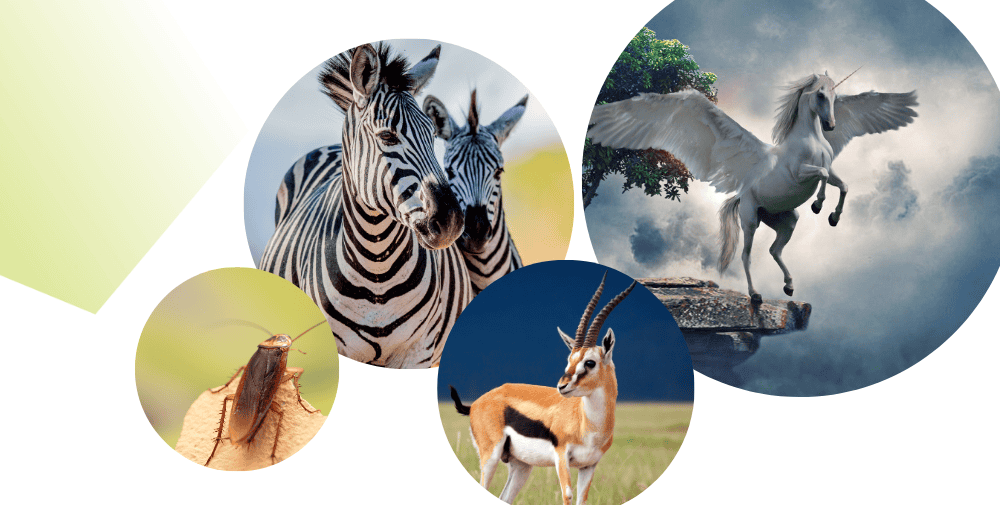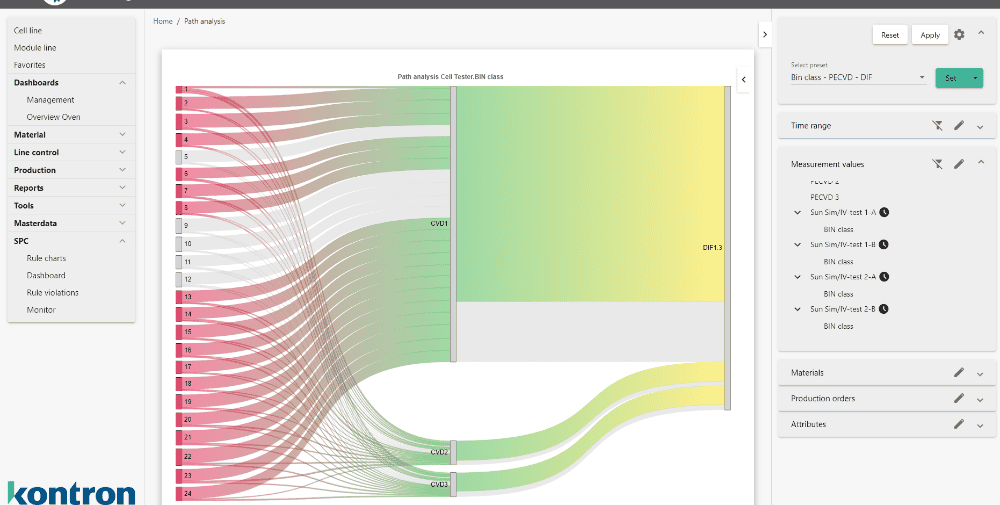Most people in the corporate environment – especially start-ups – have heard of unicorns. Like their namesake mythical creatures, they are coveted because they are as rare as they are valuable. Valued at a minimum of one billion US dollars before an IPO or investor exit, they are considered the holy grail of the investment scene and are hyped wherever they appear. In Saxony, for example, the software company Staffbase recently made a name for itself as a “unicorn”.
However, a new species is increasingly coming to the fore. The zebra is taking its place in the corporate animal zoo and could even overtake the unicorn. And it is not alone. The gazelle is also eyeing supremacy in the animal kingdom and even cockroaches are asserting their place in the action. We have taken a closer look at the corporate concepts of animal metaphors and explain their meaning. Are you ready? Then let’s go on a little safari through the animal software jungle.
The fabulous unicorn: a desirable target with drawbacks
When people in the start-up world talk about unicorns, they are not referring to mythical creatures, but to young companies with a market valuation of at least one billion US dollars – before they go public or are sold by investors. These companies are extremely valuable and every founder dreams of belonging to this rare breed.
For venture capitalists, such highly valued, fast-growing start-ups are particularly attractive. They are always on the lookout for the next unicorn that can not only justify their investment, but also strengthen their reputation in the industry.
But what happens to the companies that fail to meet the high expectations of their investors? Many of them develop steadily, but never reach the coveted billion mark. These companies often experience tough pressure from their investors and are often dropped if they fail to deliver. As a result, many companies with potential fall by the wayside. A reason for entrepreneurs not to indulge in high-speed growth at any price, but to aim for sustainable growth.
The responsible zebra: sustainability instead of a quick exit
This is precisely the approach taken by the “zebras”. The term “zebra” for a certain type of start-up was coined by the four founders Scholz, Zepeda, Brandel and Williams. They introduced the term in 2017 in an article on the US platform Medium. The article took a critical look at the ubiquitous obsession of many start-ups to grow as quickly as possible and achieve high profits. The choice of the zebra as a symbol was particularly emblematic: zebras are black and white, which stands for profitable and socially responsible – two characteristics that the founders believe should be inseparable.
Another reason for the choice of the zebra lies in its character as a herd animal, as opposed to being a loner. Zebras achieve their goals through cooperation and community, rather than through individual loneliness.
Unicorn and zebra in comparison
Unicorn
- Growth: exponential
- Strategy: Monopoly position through disruption
- Target: high market valuation
- Motto: more
Zebra
- Growth: sustainable
- Strategy: Co-existence and cooperation
- Goal: societal influence
- Motto: enough, better
Are zebras the better unicorns?
The zebra movement raises a critical question: are the rapidly growing unicorns really the ideal role models? Especially when profit comes at the expense of human needs, social justice and environmental protection? If you look at unicorns such as Uber, Airbnb or Flixbus, whose business models are often criticized for the poor working conditions of drivers or rising rents in large cities, this criticism is not unfounded.
At the same time, we are not concerned with “better” or “worse”. Even high-flying companies that achieve an enormous market value within a very short space of time do not necessarily have to be morally inferior. Another effect weighs much more heavily here. Compared to the relatively small number of unicorns, they attract a large part of the attention. It is not only the zebras that are often overlooked alongside them, which in turn means that these more sustainably oriented companies often find it more difficult to obtain the necessary funding, recognition and support.
The dynamic gazelle: agile growth engine
Gazelle companies are agile, fast-growing companies that expand rapidly on the market. They are characterized by impressive growth rates and increase their sales volume and/or number of employees by an average of more than 20 percent per year for three years in a row. At around 19.8 years old, they are significantly younger than established companies, which have often been in existence for over 42 years. This youthfulness is reflected in their dynamic and flexible company management, which makes them particularly adaptable to market changes. Gazelles are smaller, with an average of 155 employees, and therefore also have the ability to operate with greater agility. Interestingly, there are many companies from the manufacturing sector among the gazelles, which could indicate that there is innovative growth potential in the manufacturing industry in particular. It is also fitting that research and development play a decisive role in the rapid growth of the gazelles. Sustainability and ecology are less of a focus, which is the main difference to the zebras. Overall, gazelles are not only important engines of growth, but also significant employers. Their dynamic growth makes a significant contribution to creating new jobs and stimulating the economy. Their success demonstrates that agility and proactive adaptation to market conditions are key components to surviving and thriving in our fast-paced economic world characterized by tremendous technological advancement.
The resilient cockroach: a robust player even in uncertain times
It may be hard to believe, but slow, gradual progress can also be the right approach – welcome to the world of cockroaches.
Cockroaches may not be the most popular creatures, but they are true survivors. The start-ups and companies named after them are also known for their tenacity and ability to survive. They are neither glamorous nor aspirational, but they are characterized by sustainable, steady growth on their own terms before external investors are needed. Due to their lean operating structure, they can minimize costs and react flexibly to changes. Their primary goal is to remain profitable regardless of external influences. This is why they impress even in economically uncertain times – such as the coronavirus pandemic – with their ability to get by with minimal resources.
Conclusion
The world of startups is diverse and the choice of “animal” model can have a profound impact on a company’s strategy, culture and ultimately its success. Whether you see yourself as a unicorn, zebra, gazelle or cockroach, the important thing is that the strategy you choose fits with the long-term goals of the founding personality and team.
_ _ _ _ _ _
This article was created as part of NEXT “In the spotlight: Software”.
👉 To the complete issue of the magazine



